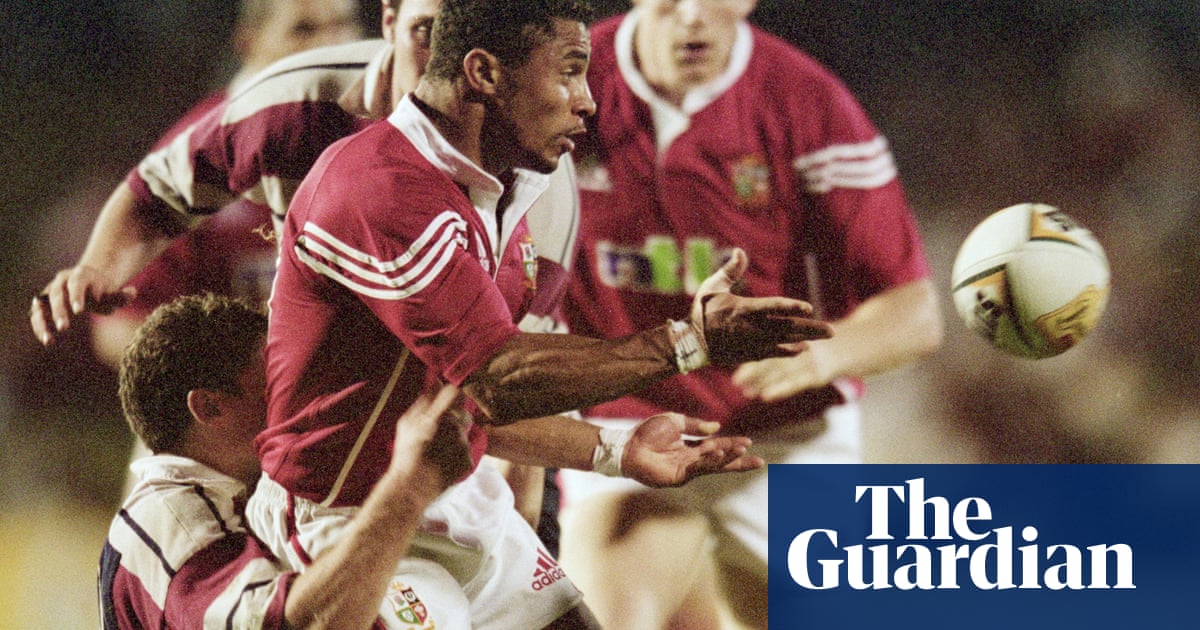June 2001. I’m on an overnight Greyhound bus from Cairns to Townsville. A typical post-university year travelling in Australia and New Zealand has taken an unwelcome turn after an equally typical relationship breakup.
Initially there had been no plans to follow that year’s British & Irish Lions tour, even though I had been enthralled by the classic encounter against the Springboks four years before. With my newfound freedom it seemed logical to head south, a couple of hundred miles down the coast, to see the legendary tourists in action.
Unbeknownst to me I was on the way to witness the birth of a new star in rugby union’s galaxy. The next day Jason Robinson, freshly converted from rugby league, scored five tries in an 83-6 victory against the Queensland Presidents’ XV.
Robinson had been an unknown quantity in his new code, but no longer. “The only real question now,”wrote Robert Kitson, “is just how the Wallabies will deal with him when the Test series starts.” As the Australian media increasingly placed itself on a war footing it was Robinson – along with a budding Brian O’Driscoll – they were most concerned about.
After a taste of the unique Lions atmosphere, I was hooked. Itineraries were changed, flights booked, tickets rustled up. Sourcing a first-Test ticket proved impossible, so I settled for watching in a packed bar on Magnetic Island. Cue Robinson burning past Chris Latham, the Wallabies full-back, for that exhilarating first try at the Gabba. Cue utter pandemonium.
A little later, the celebrations that met O’Driscoll’s second-half breakaway try, one of the great Lions moments, remain imprinted in my memory. So does the local fan who told me after the match: “Mate, it’s the All Blacks we really want to beat. The Lions doesn’t matter.”
Not on the evidence of the coming weeks. “Threat of a rout hangs in the air,” read one rueful headline as Australia came to terms with the Lions’ first-Test supremacy. Martin Johnson’s side had been dominant and Rod Macqueen, Australia’s coach, had some thinking to do.
On and off the pitch the Lions had been in the ascendancy. An inquest was held as to how so many foreign fans secured tickets for the Gabba. Australian gold T-shirts and flags were produced and distributed to home supporters in a desperate attempt to redress the balance.
As an English cricket fan, I was accustomed to Australia’s Ashes tourists being received by largely upbeat media coverage, a smattering of polite applause, perhaps even a word or two of encouragement.
I was taken aback by the Australian media’s tactics as defeat loomed into view. As far as they were concerned this was all-out war. Journalists saw themselves as the Wallabies’ 16th man, and every opportunity to take a potshot at the tourists was enthusiastically seized.
To Melbourne for round two, where Nathan Grey put the fearsome England blindside flanker, Richard Hill, out of the series. Graham Henry’s side had looked on course for a series-sealing victory – they led 11-6 at half time after Neil Back’s try.
A couple of big chances were missed – a break by Dafydd James, the Wales wing, lingers in the mind. Hill’s enforced departure, and a momentum-turning Joe Roff intercept from a looping Jonny Wilkinson pass culminated in a 35-14 home win. Matthew Burke kicked six penalties and a conversion, Roff crossed twice. Game on.
“The management insist it was an unpunished act of thuggery,”Kitson wrote of Grey v Hill. “It is fair to say we are very disappointed,” said Donal Lenihan, the tourists’ manager, after the Wallabies centre –who subsequently said the incident was accidental– escaped punishment. The Lions won three halves of rugby with Hill, and lost the next three without him.
But perhaps some of the Lions’ problems were self-inflicted. There were rumblings of discontent within camp about how hard the players were being worked. (Peaking in Brisbane before fading in Melbourne and Sydney would ultimately point to fatigue being a factor.)
Austin Healey’s Observer column, meanwhile, caused a furore before the final Test when he labelled the Australia lock Justin Harrison an “ape” and a “plank”. The Australian medianeeded no further invitation to give Healey and the Lions both barrels.
Tickets for that Sydney decider were like gold dust. Securing one involved a night in a sleeping bag on the pavement outside a branch of Ticketek. My girlfriend – we were back together by then – bravely joined me on the concrete. My personal life may have been mended temporarily, but a sporting calamity beckoned.
Wilkinson, a major injury doubt for the third Test, recovered and performed with customary grit. Home fans around us at Stadium Australia endlessly insisted he was about to “choke”, but a personal haul of 18 points would suggest otherwise.
Still the Lions trailed in the dying minutes. They won a lineout in the corner. With Wilkinson kicking metronomically, even a pushover score out wide would surely be converted? But Harrison didn’t need to think too hard about who the tourists would look for in the all-important lineout. He snaffled a throw intended for Johnson, and with it the series.
Order restored, as the Aussies saw it, the Lions’ threat safely seen off. But the conflict continued. Wearing a Lions shirt around Sydney attracted some trash-talk in the following days, often from children: the life of a sporting tourist in Australia.
Those formative memories of 2001 – almost a generation ago, or what can feel like the blink of an eye – will last for ever, but some things never change.Maro Itoje and co. be warned: the Aussies still hate losing, and are sure to indulge in a spot of Lions-baiting, too.
This is an extract taken from our weekly rugby union email, the Breakdown. To sign up, justvisit this pageand follow the instructions.
